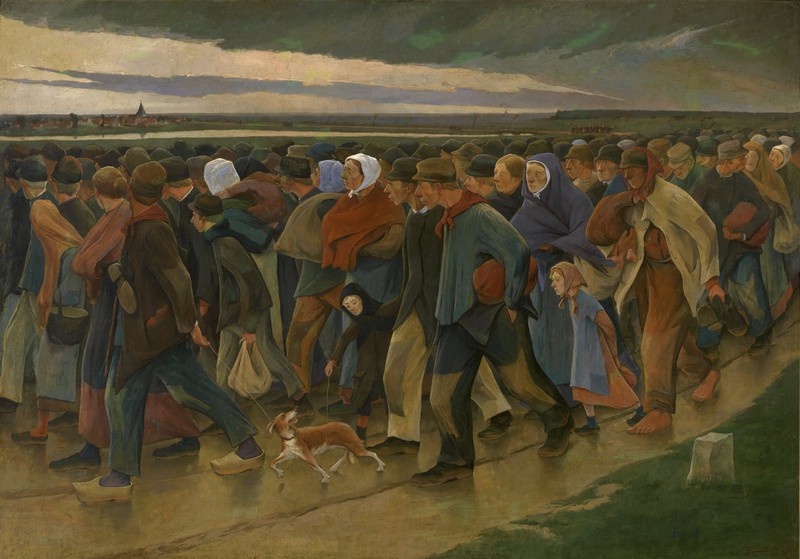
In 1874, the catholicos Gevorg IV founded a seminary in Etchmiadzin, in the cathedral premises, which was the religious centre of the Armenians. The head of the Armenian church established that every year twenty orphans who stood out for their intelligence and willingness to study were chosen to receive in the seminary the education that their situation did not allow them. In 1881, Soghomon Soghomonian, who was eleven years old at the time, arrived at the seminary from Kütahya, where he was born; his father had just died (his mother had died when he was a baby), and he was left unprotected. The approximately 1800 km separating the two locations must have seemed to the child to be a formidable distance.
The lessons children learned at the seminary were not just about religion. The catholicos had also stipulated that the children should study their own culture, the Armenian, aware that it was neglected in the Ottoman Empire. In the case of Soghomon, it was so neglected that he did not know a word in Armenian because it was forbidden to speak this language in Kütahya. He quickly learned it, and the stories and tales he was told were the seed of one of his musical passions, the traditional Armenian song. The child, who had excelled in the choir of his parish, immediately also excelled in the study of sacred music and left the seminary being an expert. This was another musical passion for him. And there would be a third one, you will see.
In 1894, Soghomon was ordained a hieromonk (I have learned some unusual words, preparing this article). Being a monk, he was ordained a priest, and took as his new name the name of a 7th-century catholicos who was a musician and poet: Komitas.
The young monk began to collect folk songs while still in the seminary. It was not an easy task to do. To gain their trust, he frequently visited the peasants, who were puzzled by the monk's request to sing without any reason. Until the time came when they allowed him to witness their life; it was then, in the context of everyday tasks, that songs emerged. He maintained that to collect and harmonize that music, it was necessary to understand the spirit of the Armenian people; and in this, he did not significantly distance himself from what Herder maintained many years before.
In 1895, he published his first collection of songs, and the following year he went to Berlin to continue his training. He knew the language because German was one of the languages he had learned at the seminary, and in addition to piano, composition, and choir direction, he studied philosophy and musicology. And that was his third musical passion, musicology. Komitas combined the European musical tradition with Armenian music, thus helping to create a new school of music in his country; he “translated” Armenian music, based on a modal system, into the European system, which made it possible to spread it among us; he deciphered the old system of notation of religious music preserved in liturgical manuscripts, which was one of the enigmas of the monasteries, and came to record the most important works.
In 1899, he returned to Etchmiadzin, now serving as choir director and music teacher, while continuing to collect and document songs, which eventually became thousands. However, he felt uneasy; the problems with his superiors were frequent because they considered that, with so much music, he was leaving aside his duties as a priest, which should be his priority (very probably, they were right). Finally, in 1906, he was allowed to travel to Europe again: Russia, Germany, Austria, Italy... and Paris. While in Central Europe music was being renewed with atonalities and serialisms, in Paris it was done through Orientalism, and that cultured priest arrived from Armenia left composers speechless with their lectures and music. Ravel, Debussy, even Fauré were captivated by Komitas; it appears that, after a concert with his music, Debussy expressed to him: “You are a genius, Reverend Father!”. Komitas, happy with the warm reception, remained in Paris for a long time.
Finally, our hieromonk left the seminary and settled in Constantinople in 1910; the atmosphere was more European and there was a large Armenian community. There he founded a singing school, and a choir of three hundred voices which used to go on tour. Komitas was a prominent, highly esteemed, and highly admired individual.
He still made one more trip to Paris in 1914 to attend the 5th congress of the International Music Society, an organization dedicated to musicology, of which Komitas was co-founder. In addition to delivering lectures on Armenian religious and traditional music, he also presented a concert at the Armenian cathedral in Paris, Saint John the Baptist, where his funerals would be held a mere twenty years later.
With the outbreak of the Great War, Komitas returned to Constantinople, and soon thereafter began his ordeal, as well as that of the Armenian people. After several attempts about twenty years before that had cost the lives of between 80,000 and 300,000 people, the Ottoman Empire began what it intended to be the final eradication of the Armenians on April 24, 1915. Because they were Christians, because they constituted the bulk of the middle class, because they were perceived as a threat, or because the empire disintegrated. The reality is that during the attempt at extermination (the term genocide would be coined three decades later), one and a half million Armenians were slaughtered until the autumn of 1916, out of a population estimated to be between two and two and a half million.
The first assault took place in Constantinople, targeting the most prominent intellectuals; they were detained and deported to commit a more discreet assassination. Komitas was among them, and was one of the few survivors, thanks to the intervention, among others, of the United States ambassador to Constantinople. The horrors and tortures he suffered marked him so deeply that, although his body recovered, his soul remained disturbed. It probably didn't help at all that, when he returned home, he found that almost nothing remained, nor of his work, nor of his friends and neighbours.
Today, we would most likely mention post-traumatic stress and survivor syndrome, and perhaps we would know better how to treat them. But the only thing his friends could do for him was to pay him to a psychiatric hospital. In Constantinople, first. Then, once the war was over, in Paris; perhaps there, in that city he loved so much, he would recover. All in vain. He remained alien to everything and everyone (his mutism was said to be deliberate, he would rather not return to this terrible world) until he died on 22 October 1935 in the psychiatric hospital Villejuif.
The Armenian Genocide was soon forgotten (Hitler was aware of it and took it as a good omen to start another one). However, while it lasted, although Europe was bleeding, some tried to help. On April 9, 1916, a concert was held at the Sorbonne in honour of Armenia. Among the works performed was Անտունի [Antouni, Song of the Emigrant], a song from which Debussy stated that, even if he had not written anything else, it was enough to consider Komitas one of the great composers of the time. This is the song we are listening to this week, performed by Ruzan Mantashyan and Kirill Gerstein. I hope you enjoy it, and I apologize for the lengthy article. I have been wanting to write about Komitas for years, you see...
Սիրտըս նման է էն փըլած տըներ,
Կոտրեր գերաններ, խախտեր է սըներ.
Բուն պիտի դընեն ﬔջ վայրի հավքեր.
Երթամ՝ ձի թալեմ էն ելման գետեր.
Ըլնիմ ձկներու ձագերացըն կեր։
Ա՜յ, տո լա՜ճ տընավեր։
Սև ծով մ՚եմ տեսե, սիպտակն էր բոլոր.
Ալին կըզարներ, չէր խառնի հիրոր.
Էն ո՞րն է տեսե ﬔկ ծոﬖ երկթավոր,
Անտունի սիրտն է պըղտոր ո մոլոր։
Ա՜խ, իսկի ﬕ՛ լնիք սըրտիկ սևավոր։
Ա՜յ, տո լա՜ճ տընավեր
My heart is like shattered houses,
pillars broken, timbers asunder.
Wild birds will nest in these ruins.
I want to go to the river, throw myself in
and become fodder for the young fish.
Ah, poor homeless lad!
I’ve seen a black sea coated in white,
the waves were beating yet unable to mingle:
who has ever seen a two-faced sea?
The homeless person’s heart is troubled and lost.
Oh, my heart, may you never be draped in black.
Ah, poor homeless lad!
(translation by Myrios Classics)


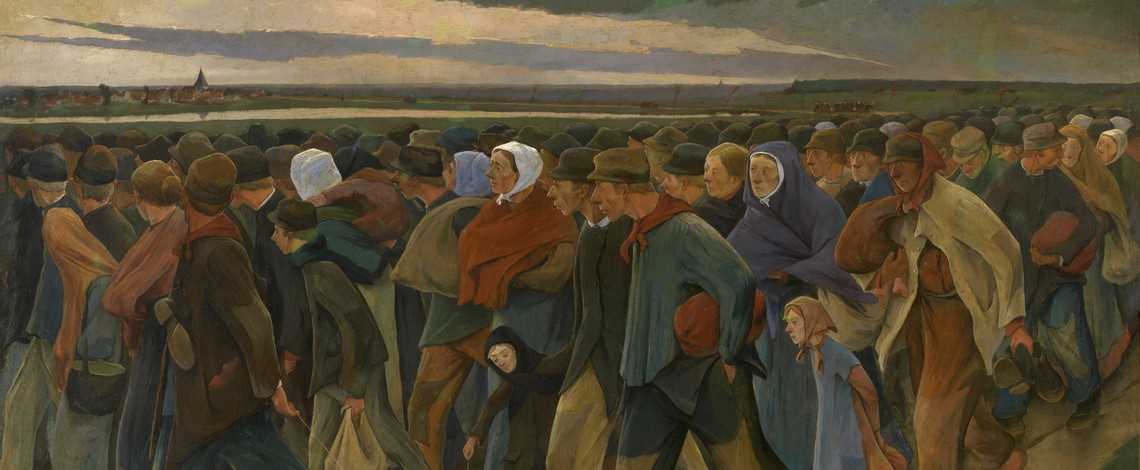


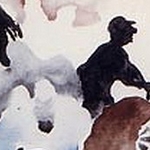




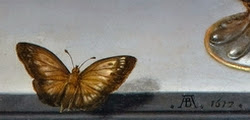
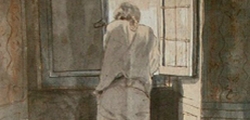

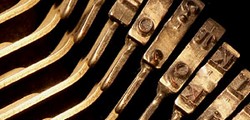



Comments powered by CComment